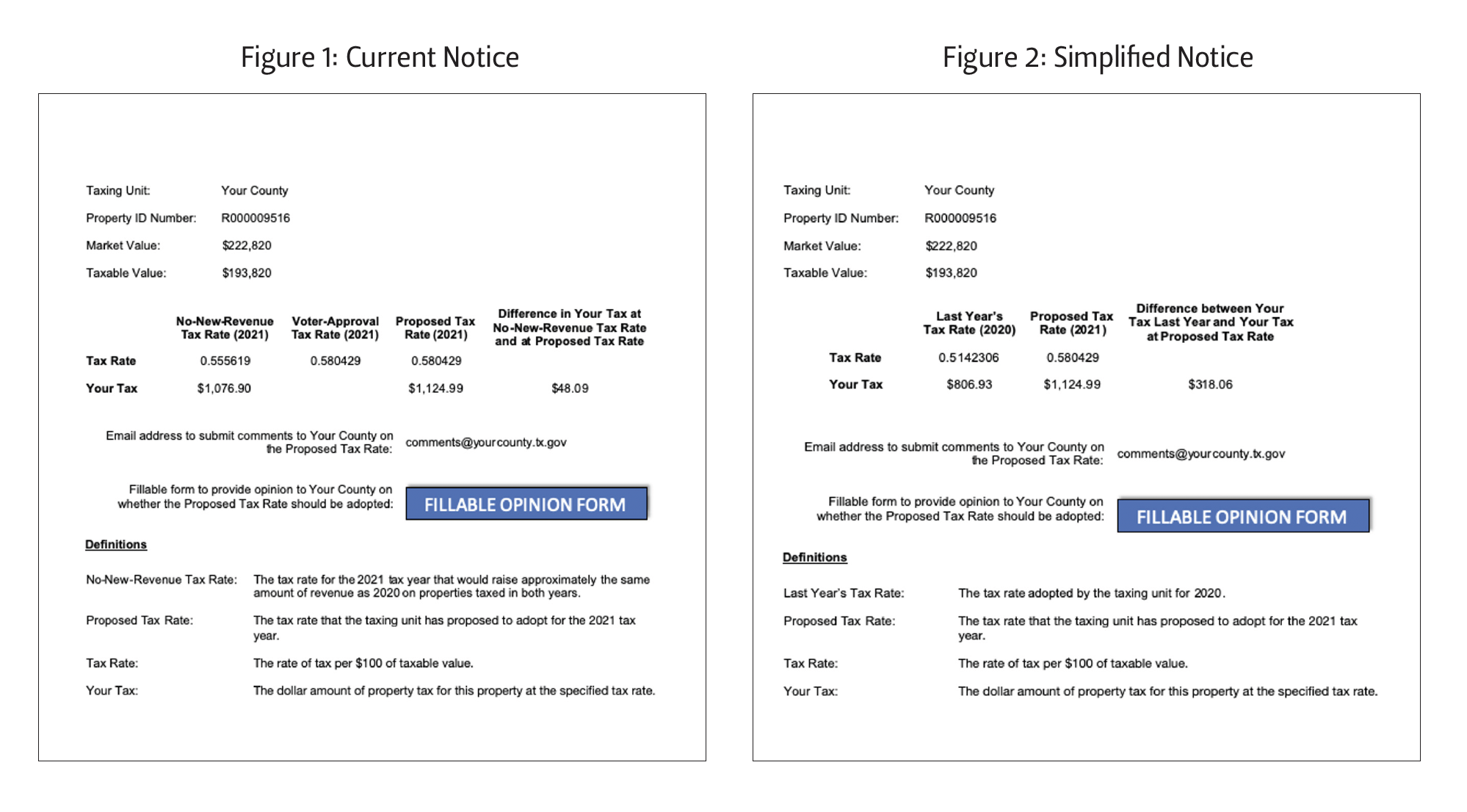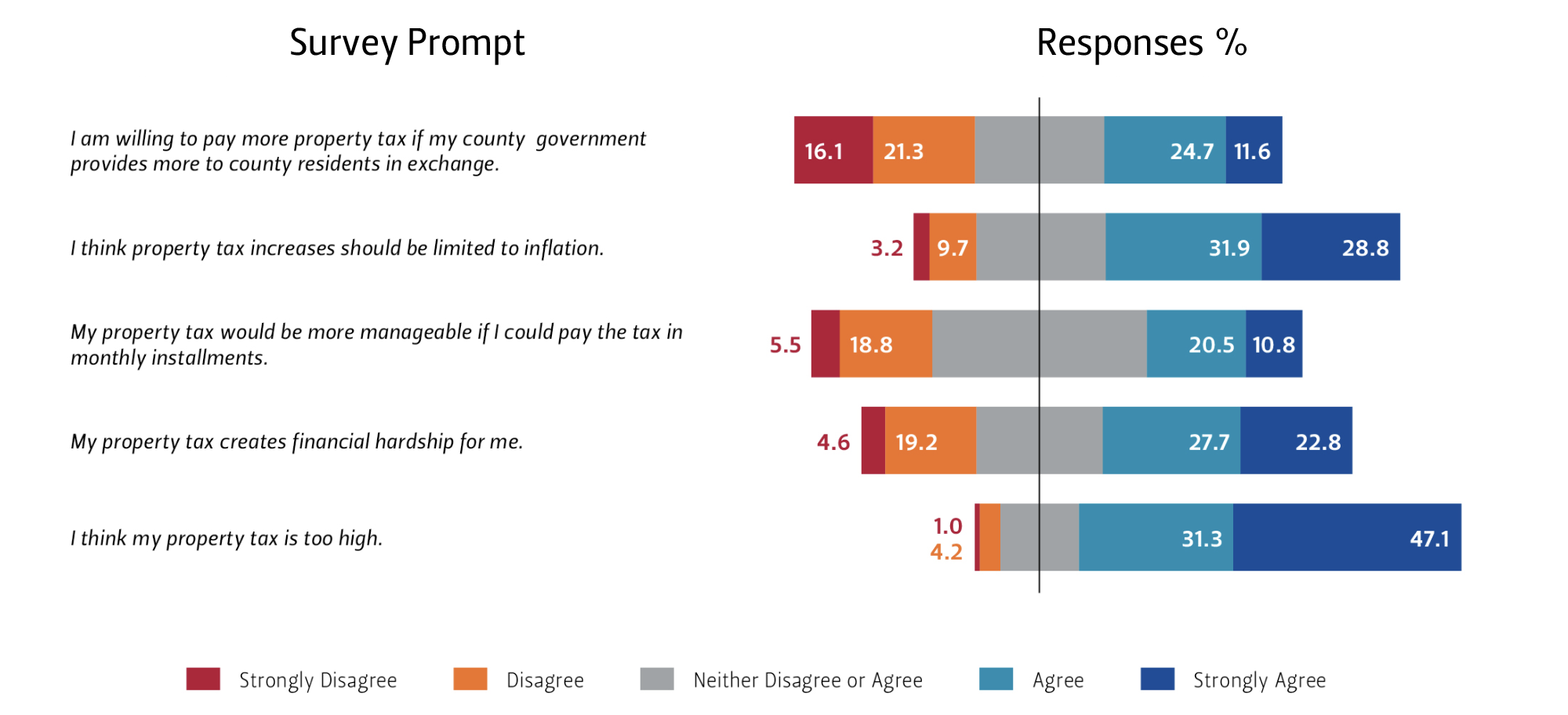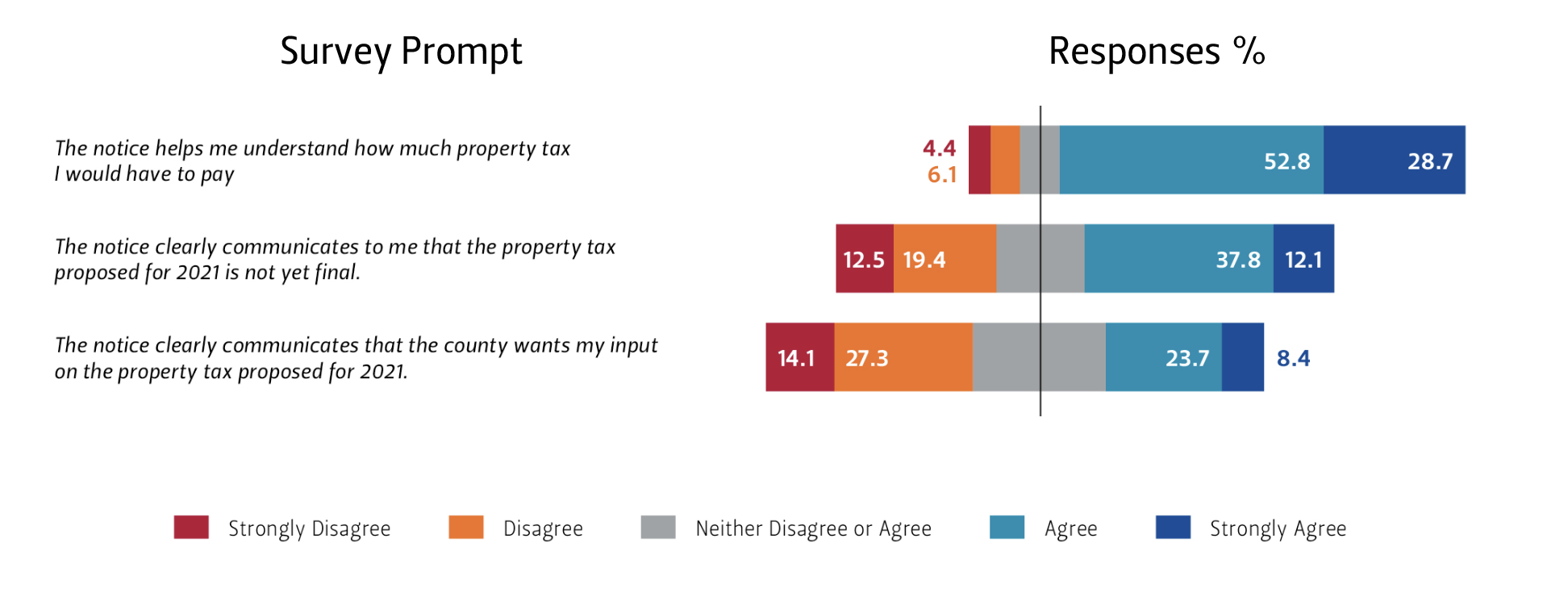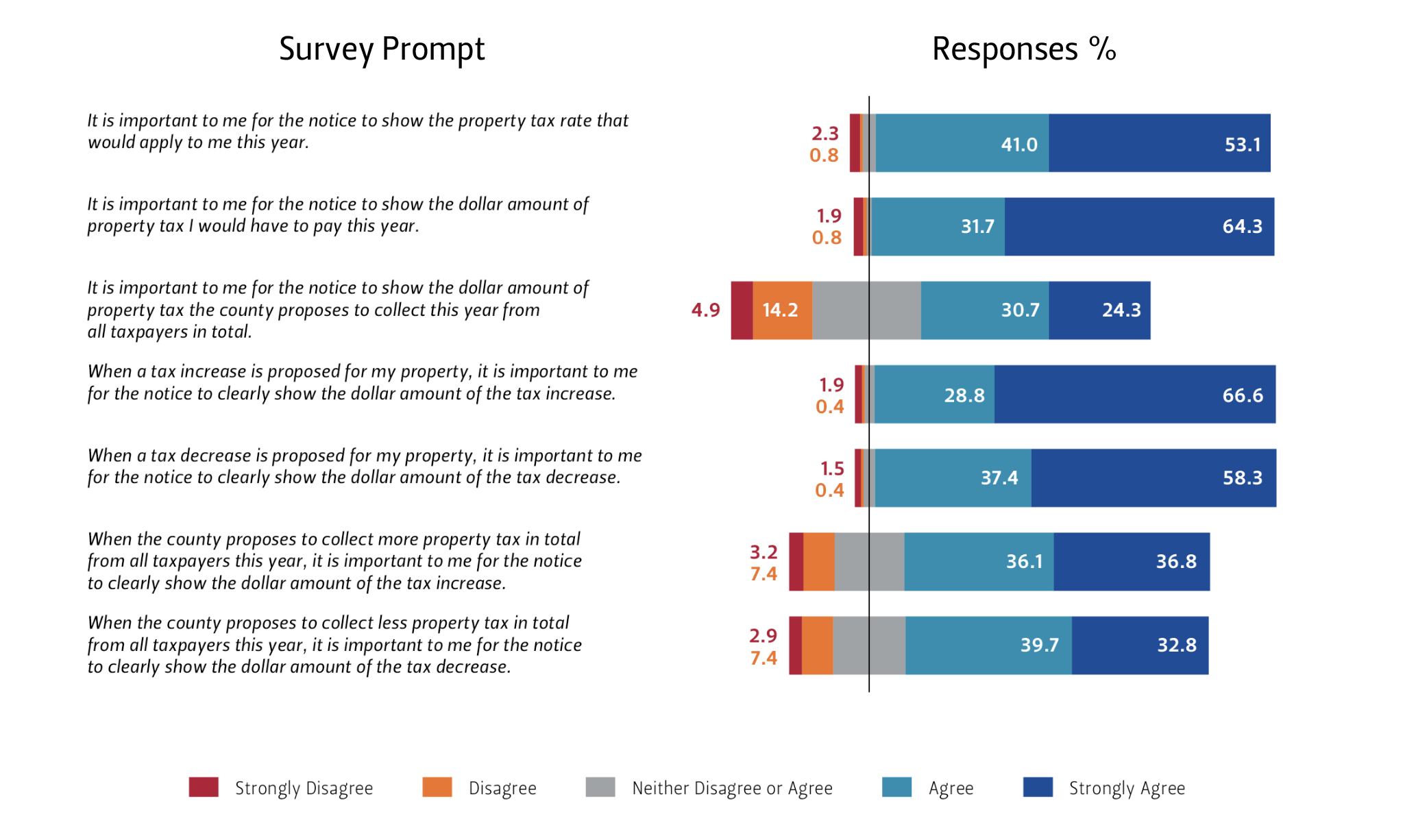How Tax Rate Notices Can Better Serve Texas Taxpayers

Table of Contents
Author(s)
Lebena Varghese
Former Research ScholarJennifer Rabb
Former Director and Fellow, McNair Center for Entrepreneurship and Economic GrowthDownload the handout in the left-hand sidebar for more details, and read the full research paper on truth-in-taxation measures in Texas here.
What Is the Purpose of Truth-in-Taxation Measures?
A common notion is that an increase in the market value of property inevitably leads to a rise in property tax levies. In reality, this is true only when government officials choose not to decrease tax rates in response. Truth-in-taxation measures are intended to curtail increases in property tax by helping property owners hold elected officials accountable for the taxes they impose.
Study: Is the New Tax Rate Notice Effective as a Truth-in-Taxation Measure?
In 2019, Texas enacted a new truth-in-taxation measure requiring all counties to deliver individualized tax rate notices to property owners on a digital platform. See Texas Government Code § 26.17(b). We investigated how well the new tax rate notice performed as a truth-in-taxation measure and whether different formats worked better.
In two experiments, we recruited 767 homeowners and business owners in Texas and presented each with a tax rate notice showing a tax increase. Some of the notices were in the format required by Texas law and some were variations on the Texas law. We asked participants a series of questions to gauge their understanding of the notice and what prompted them to give feedback to tax officials.
Finding: A Simple Notice Works Best
Our research found that a simplified notice comparing the proposed tax to last year’s tax (Figure 2 in PDF) performed better as a transparency measure than the notice currently required by Texas law (Figure 1 in PDF). Participants better understood the simplified notice and found it easier to identify a tax increase. These results were not affected by the size of the tax increase.

Finding: Larger Tax Increases Prompt Feedback to Taxing Authorities
Our experiments also found that property owners are more likely to provide feedback to taxing authorities when presented with a larger tax increase compared to a smaller tax increase. Participants who were shown a $318.06 tax increase were more than twice as likely to give feedback compared to those who were shown a $48.09 tax increase. These results were not affected by the form of the notice and were the same for the current notice and the simplified notice.
Observation: New Tax Rate Notice May Be Less than Truthful
Our study also highlighted the importance of the Legislature’s choice of information for the tax rate notice. The current notice and the simplified notice in Figures 1 and 2 (in PDF on left-hand sidebar) relate to the same property and reflect the actual tax information for that property, a real home on the tax roll of Van Zandt County, Texas. The actual tax increase experienced by the owner of this property was $318.06, as shown in the simplified notice. The notice under current law, however, showed a tax increase of only $48.09, a substantial understatement. This difference illustrates a significant shortcoming of the current notice for any given property:
- If the tax at the no-new-revenue tax rate is greater than last year’s tax, the notice will understate the dollar amount of the tax increase proposed for the property; and
- Conversely, if the tax at the no-new-revenue tax rate is less than last year’s tax, the notice will overstate the dollar amount of the tax increase proposed for the property.
Further research is needed to determine the prevalence of these scenarios for Texas property owners.
Recommendation: Tax Rate Notices Should Provide Relevant Information
The digital tax rate notice in Texas should be revised to provide information that property owners can easily understand and to represent tax increases as accurately as possible. Specifically, Section 26.17(b)(1)-(11) of the Texas Tax Code should be amended to require the digital tax rate notice to include the following information for a property, as shown in Figure 2 (in PDF):
- Last year’s tax rate;
- Taxes imposed last year;
- Proposed tax rate;
- Taxes that would be imposed at the proposed tax rate; and
- The difference between the taxes that would be imposed at the proposed tax rate and the taxes imposed last year.
Opinion and Preference Survey
The opinion and preference survey included a survey of 527 homeowners and business owners in 27 Texas counties about the digital tax rate notice and the property tax burden generally. The results are summarized in the graphs found in the PDF on the left-hand sidebar.
Do Taxpayers Think Their Property Taxes Are Too high?
Results: Most taxpayers think their property taxes are too high, and increases should be limited to inflation.

Do Tax Rate Notices Serve Their Purpose?
Recommendation: Tax rate notices should emphasize that tax rates are not final and feedback is wanted.

What Information Do Taxpayers Want?
Recommendation: Emphasize the information that pertains to the individual taxpayer’s property.

Download the handout in the left-hand sidebar for more details, and read the full research paper on truth-in-taxation measures in Texas here.


